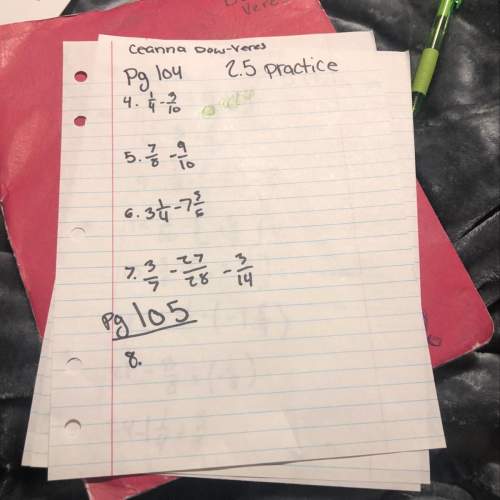
Mathematics, 11.03.2020 03:01 peytonbrien2002
Assume that females have pulse rates that are normally distributed with a mean of mu equals 73.0μ=73.0 beats per minute and a standard deviation of sigma equals 12.5σ=12.5 beats per minute. Complete parts (a) through (c) below.
a. If 1 adult female is randomly selected, find the probability that her pulse rate is less than 76 beats per minute. The probability is nothing.
(Round to four decimal places as needed.)
b. If 25 adult females are randomly selected, find the probability that they have pulse rates with a mean less than 76 beats per minute. The probability is nothing.
(Round to four decimal places as needed.)
c. Why can the normal distribution be used in part (b), even though the sample size does not exceed 30?
A.
Since the mean pulse rate exceeds 30, the distribution of sample means is a normal distribution for any sample size.
B.
Since the distribution is of individuals, not sample means, the distribution is a normal distribution for any sample size.
C.
Since the distribution is of sample means, not individuals, the distribution is a normal distribution for any sample size.
D.
Since the original population has a normal distribution, the distribution of sample means is a normal distribution for any sample size.

Answers: 2


Other questions on the subject: Mathematics



Mathematics, 21.06.2019 23:30, jordynp2615
In the diagram, ab is tangent to c, ab = 4 inches, and ad = 2 inches. find the radius of the circle.
Answers: 2

Mathematics, 22.06.2019 00:50, chinyere614
Identify the statement below as either descriptive or inferential statistics. upper a certain website sold an average of 117 books per day last week. is the statement an example of descriptive or inferential statistics? a. it is an example of descriptive statistics because it uses a sample to make a claim about a population. b. it is an example of inferential statistics because it uses a sample to make a claim about a population. c. it is an example of inferential statistics because it summarizes the information in a sample. d. it is an example of descriptive statistics because it summarizes the information in a sample.
Answers: 1
You know the right answer?
Assume that females have pulse rates that are normally distributed with a mean of mu equals 73.0μ=73...
Questions in other subjects:

Health, 14.10.2019 16:00



History, 14.10.2019 16:10


Mathematics, 14.10.2019 16:10


Mathematics, 14.10.2019 16:10





